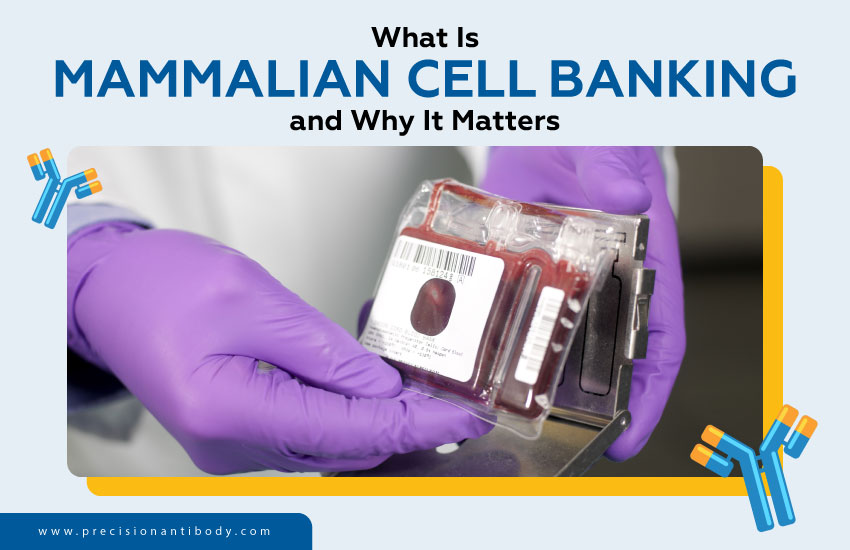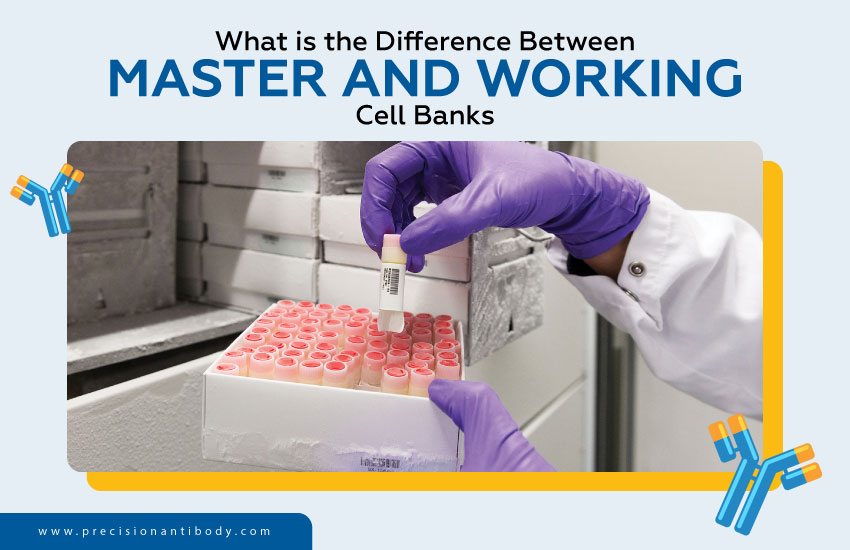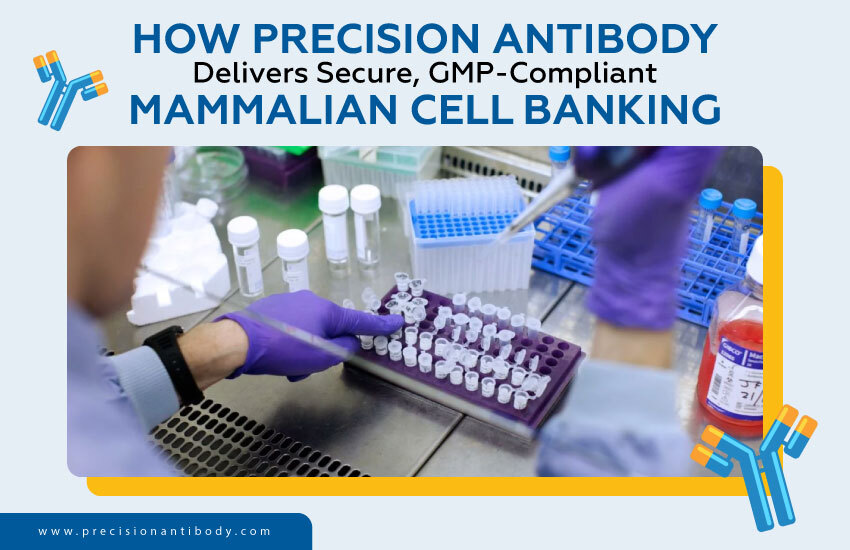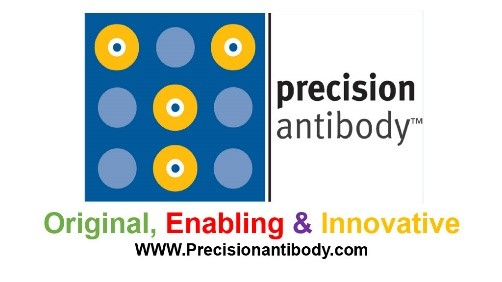Biopharmaceutical manufacturing really thrives on the consistent and dependable performance of mammalian cell lines. These cell lines play a crucial role for producing therapeutic proteins, monoclonal antibodies and vaccines. Issues with cell quality such as contamination or genetic instability can definitely compromise product safety and lead to costly delays.
To keep these hazards at bay guidelines such as the International Council for Harmonization (ICH) Q5D highlight how crucial it is to have a mammalian cell bank. Organizing master and Working Cell Banks helps ensure that things stay stable over time, follow the rules, can be repeated and have a consistent supply for large scale production.
Recent research shows that cell banks cut manufacturing risks by 40%. Biomanufacturing gets a boost from traceability, secure storage and quality checks, making it more reliable and efficient. This safeguard is crucial for developing biologics. It helps ensure reproducibility and meet regulatory standards which are key for successful clinical trials and getting market approval.
This article looks at why mammalian cell banking matters, five ways it reduces production risks, and how Precision Antibody offers secure, GMP-compliant cell banking services for lasting success.

Mammalian cell banking is making an organized contamination-free stock of cell lines that can be stored and used throughout the life cycle of biologics development.
These banks are usually set up as:
By getting these banks early, developers lower the risks of genetic drift, contamination and unpredictability that could make the product less consistent and safe.
Mammalian cell banking isn’t just about storage it’s essential for ensuring product quality, meeting regulations and achieving lasting manufacturing success. Investing in strong MCBs and WCBs helps biopharma teams lower production risks and create a solid foundation for all stages of biologics development.

Biopharmaceutical development encounters many hurdles such as genetic instability and surprise supply disruptions which can jeopardize product safety and reliability. Mammalian cell banking is a smart way to ensure high quality cell lines are preserved and ready for long term use helping to secure successful manufacturing outcomes.
Establishing Master and Working Cell Banks helps organizations ensure dependable protection throughout the entire production process.
Here are five essential ways that mammalian cell banking minimizes risks and boosts confidence in developing biologics:.
Over multiple passages cell lines are prone to genetic mutations that can alter protein expression. Banking cells early preserves their original and stable genetic profile.
Microbial contamination is a leading cause of batch failure in biologics manufacturing. Cell banks, stored under controlled and sterile conditions reduce this critical risk.
Large-scale biologics programs often span years, requiring a stable cell source. Cell banking provides renewable supply to meet long-term production demands.
Regulatory agencies require documented proof of cell line quality and traceability. Mammalian cell banking fulfills these obligations and easing IND and BLA approvals.
Unexpected events like contamination or equipment failure can halt production. With cell banks, recovery is faster and less disruptive to supply chains.
Mammalian cell banking is more than just a safety measure; it is a strategic protection that makes sure that the biologics development lifecycle is stable, compliant and resilient.

Mammalian cell banking has two main parts: the Master Cell Bank (MCB) and the Working Cell Bank (WCB). They team up for effective cell management. They both play key roles in ensuring consistent and reliable biologics production, but each focuses on different aspects of product quality and regulatory standards.
The chart below shows the main differences between them:
| Feature | Master Cell Bank (MCB) | Working Cell Bank (WCB) |
| Definition | Original, GMP certified bank created from a single cell clone | Secondary bank derived from the MCB for routine use |
| Purpose | Long term preservation of the genetic blueprint | Operational supply for manufacturing batches |
| Usage | Stored as the reference standard; rarely thawed | Regularly thawed for production and testing |
| Testing Requirements | Extensive(sterility, mycoplasma, viral safety, genetic stability) | Limited; relies on MCB testing but still validated |
| Regulatory Role | Required for IND/BLA filings as the “gold standard” | Support daily GMP manufacturing operations |
The MCB acts as the cell line’s blueprint, safeguarding its genetic info while the WCB is the dependable worker ensuring smooth and scalable production. They team up to create a system that keeps product quality in check, helps with regulatory approvals and secures long-term success in manufacturing.

At Precision Antibody we understand that your cell banks are more than just frozen vials they’re the core of your biologics program. That’s why our mammalian cell banking solutions meet GMP standards. This ensures we have top notch security, are ready for regulations and can rely on it for the long haul.
Every cell bank is set up in cleanroom facilities that are kept under strict control and maintained in aseptic conditions. This really helps cut down on contamination risks while making sure everything stays super clean and easy to track.
Your cell banks are stored in vapour phase liquid nitrogen systems that keep an eye on the temperature and have backup systems ready to go. This helps keep them stable and preserved over time.
We’ve got you covered with full traceability and documentation that’s all set for regulatory review, following FDA, EMA and ICH guidelines. This really simplifies your IND or BLA submissions and helps to speed up the approval process.
Team up with Precision Antibody for safe, GMP compliant mammalian cell banking that safeguards your cell lines, speeds up approvals and builds trust from discovery all the way to commercialization.
When properly cryopreserved in vapor phase liquid nitrogen (-150°C to -196°C) mammalian cells can remain viable for 10–20 years or more without significant loss of genetic stability or productivity. The key is validated storage conditions and periodic quality checks to confirm recovery.
Yes. Cell banking facilities like Precision Antibody can accept well characterized cell lines developed by external CROs or manufacturers. Before banking all incoming cells undergo sterility, mycoplasma and identity testing to ensure compliance with GMP standards and regulatory requirements.
It really depends on the condition of the cell line and the testing needed but usually, putting together a GMP compliant Master Cell Bank (MCB) takes about 6 to 10 weeks. This covers expansion, testing, cryopreservation and documentation to make sure everything is ready for regulatory compliance.

Led by innovative minds in immunology and the antibody development field, Precision Antibody has been an industry leader for over 20 years. We not only implement a cutting-edge technique in antigen design, antibody development, production, and other analyses, but we are also constantly working on ways to improve and advance technology to match the ever-changing world of science. If you are interested in learning more about Precision Antibody’s Custom Antibody development.
Precision Antibody™ is the forefront of the global Custom Antibody industry & it is led by the innovative minds in immunology and antibody development field.
